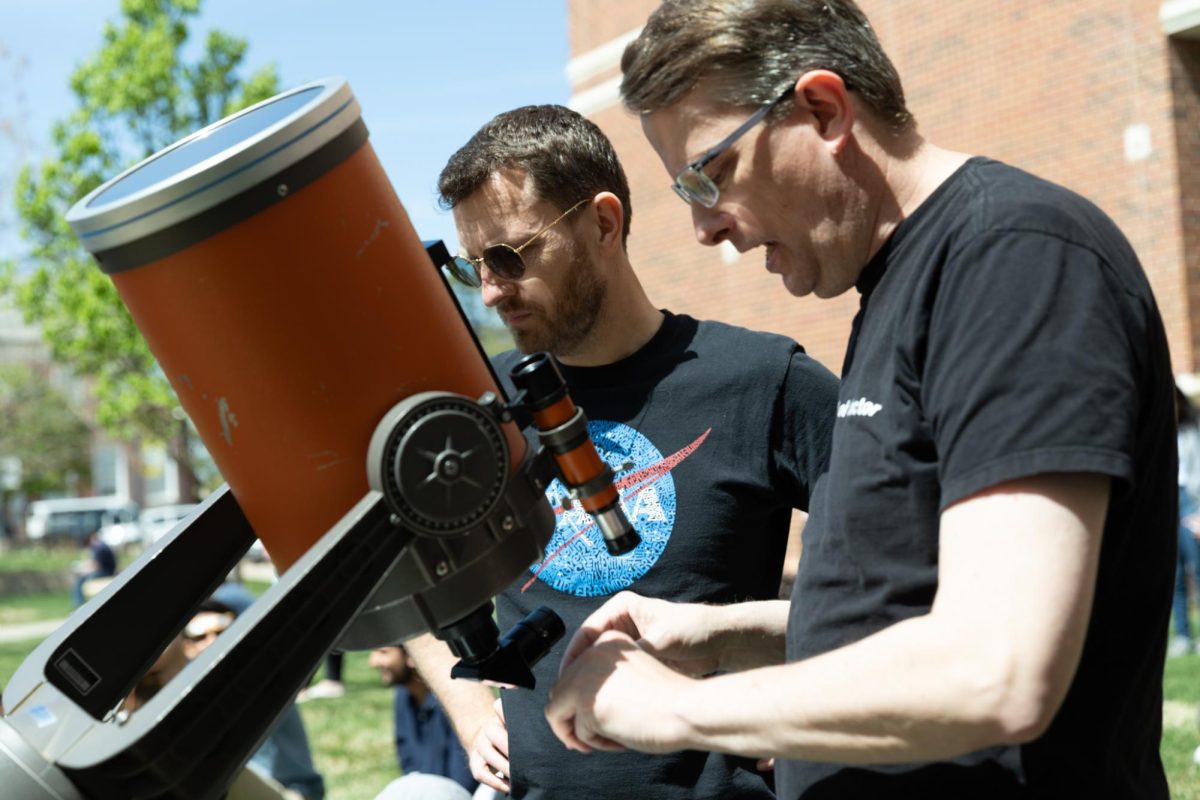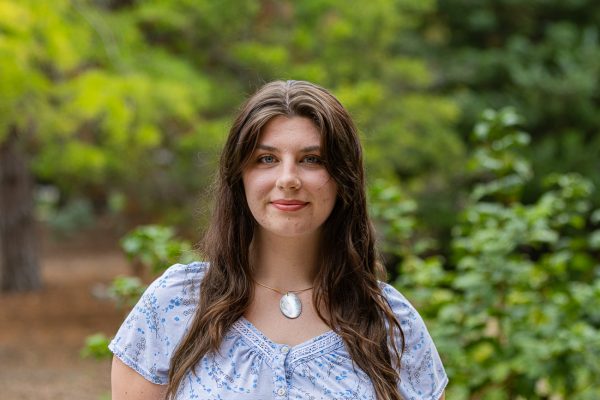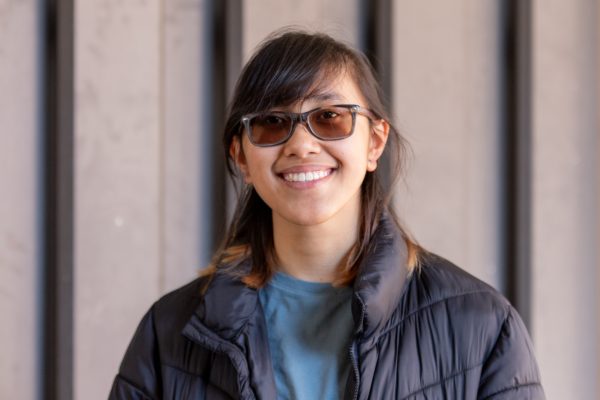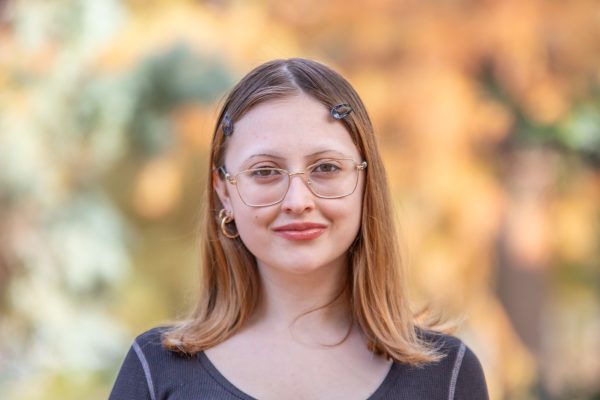A celestial spectacle occurred on campus Monday afternoon as a solar eclipse graced the skies. It captivated students who paused their daily routines to witness the event firsthand.
When a new moon moves between the Earth and the sun, it creates a solar eclipse. Wichita was not situated within the path of totality, yet residents still witnessed an 87.7% coverage of the sun.
Students left class to witness the celestial occasion, and teachers helped add to the experience. Customers gathered in Braeburn Square to enjoy a late lunch with their glasses ready on the table. Employees left the kitchens during the peak eclipse time to savor the best of the view.
Eye protection is a priority during the solar event, and people across campus made the effort for not only themselves, but other students.
A large crowd of students gathered outside of Jabara Hall and waited for a chance to use a friend’s pair of glasses or another unique tool to observe the sun and moon.
Jason Ferguson, professor and director of physics, set up a telescope from his work on the south side of Jabara Hall.
“The telescope is owned by the physics department,” Ferguson said. “It is a Celestron 8-inch reflector. I used a 25mm eyepiece and solar filter to protect everyone’s eyes.”
The telescope allows viewers to see more details before, during and after the eclipse that the eclipse glasses do not.
“Before the eclipse, we could see sunspots on the surface of the sun,” Ferguson said. “The edge of the eclipse is more defined as well.”
Not too far away, students stood outside of the Heskett Center. Senior Mariah Anderson caught sight of the alignment with solar glasses.
“It was very surreal,” Anderson said. “I loved looking at that kind of change in the environment.”
At Ablah Library, Freshman Angelina Le Calvez caught glimpses of the eclipse with her friend before class.
“I actually asked four people if I could borrow their glasses because I always wanted to keep looking at them,” Le Calvez said.
Le Calvez, originally from France, was glad to have another opportunity to catch an eclipse after the sight in 2017 left her disappointed.
“In 2017, there was an eclipse in France, but it was cloudy so we didn’t get to see it,” Le Calvez said. “So actually seeing it like the moon aligned with the sun was just crazy, breathtaking and the experience of a lifetime if you ask me.”
The partial eclipse lingered above Wichita for only a few hours, but left a lasting impression on those who witnessed it, sparking conversations and igniting excitement for astronomical events.
All over campus, students, faculty and staff joined together, remembering their last eclipse experience in 2017, stood in awe of this alignment and now wait patiently for the next one.
The next solar eclipse will happen in 20 years on Aug. 23, 2044. Later this year, on Sept. 18, there will be a partial lunar eclipse visible for America, Europe and Africa.






